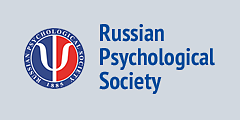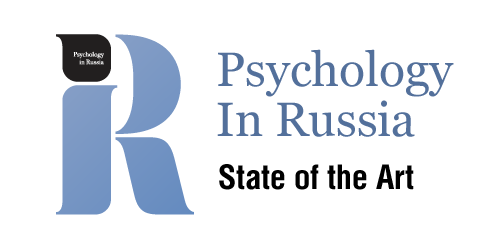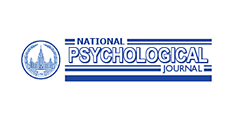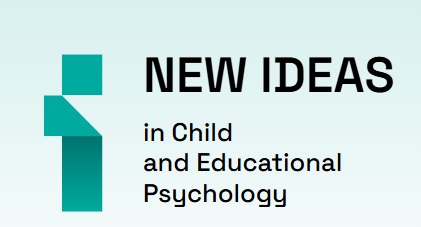Kaverina, M.Yu.

Junior Researcher, N.N. Burdenko National Medical Research Center of Neurosurgery, Department of Neurorehabilitation.
-
Spontaneous Associations under Mild Compression of the Hippocampal AreaLomonosov Psychology Journal, 2025, 1. p. 101-125read more1532
-
Background. The network principle of brain realization of cognitive phenomena assumes the self-organization of distributed neuronal elements into a network for processing information demanded by the organism at a given moment. Cerebral networks that are formed during rest and are associated with spontaneous associative flows are of particular interest. One of the key structures of resting-state networks is the hippocampus.
Objective. The aim of this research was to investigate spontaneous associative flows at rest in the context of left or right-sided compression of the hippocampal area.
Study Participants. The research involved 16 patients with benign meningiomas that mildly compress the medio-basal regions of the temporal lobe in the area of the hippocampus. The mean age was 47.5 years (SD = 8.3; 12 females; all participants were right-handed). One group comprised 9 patients diagnosed with left-sided tumor location (referred to as “grLS”), while the other group included 7 patients with right-sided tumor location (“grRS”). The groups were comparable in terms of morphometric characteristics of the tumors, degree of hemisphere compression, and socio-demographic factors.
Methods. The study consisted of two sessions at rest, each lasting 3 minutes. Prior to each session, the patient listened to a voice record of a modulating instruction. Immediately after the session, the patient gave a spontaneous narrative and a structured interview about spontaneous associations during rest. The entire conversation was recorded and subsequently transcribed into text format.
Results. Spontaneous associative flows had lateral specificity. In cases of left hemisphere compression, spontaneous thoughts, emotions, and memories were typically linked to the awareness of the moment of their formation, associated with specific events, and had a conscious border with fantasy plots. With right hemisphere compression, the flow was less controllable, associations were related to generalized memories, in which one’s own experience was mixed with information from any other sources and fantasy elements, and transitions had no boundaries. In the left hemisphere group (grLS), associations were predominantly visual and verbal in nature, whereas in the right hemisphere group (grRS), polymodal flows were recorded.
Conclusions. When the right hemisphere is compressed, the flow of associations is poorly controlled, transitions between real and fantasy elements have no boundaries, being combined in the same plot. When the left hemisphere is compressed, memories, as a rule, are tied to specific episodes of one’s own experience, the arbitrariness component is more pronounced in them, and the flow elements have conscious boundaries.
Keywords: resting state networks; hippocampus; resting state; spontaneous flow; consciousness; memory DOI: 10.11621/LPJ-25-05
-
-
The distribution of visual attention in normal aging: the eye tracking studyLomonosov Psychology Journal, 2018, 1. p. 21-36Krotkova, О.А. , Danilov, Gleb V., Kaverina, M.Yu., Kuleva, Arina Yu. , Gavrilova, Ekaterina V., Enikolopova, E.V.read more6817
-
Relevance. The study of adaptive brain reorganizations during normal human aging is relevant both in the social aspect and in the scientific aspect. It contributes to the development of theoretical ideas about brain providing cognitive processes.
Objective. The aim of the work is to study the mechanisms of changing the volume of visual attention during normal aging using the technology of eye-tracking.
Methods. 30 healthy subjects aged 19-30 years (11 people, younger group) and 50-81 years (19 people, older group) performed an original technique assumed the memorization of triplets of images, their recall and recognition in a series of similar, identical and new images. The memorization was accompanied by the recording of subjects’ eye movements.
Results.In the older group the narrowing of volume of visual attention was obtained. For a 10-second exposure of stimuli in the older group, only the visual information associated with central stimulus was accurately remembered. Results of the older group showed a significant predominance of recall and recognition errors of stimuli over the number of those in the younger group. The differences between the two groups were not found only for the situation of recognition of the central stimulus. In the young group there was a tendency to an asymmetric appearance of errors in relation to the left and the right triplet stimuli. The right stimuli were worse reproduced verbally, and the left ones were less well recognized. In the older group the asymmetry in the recognition and reproduction of stimuli was not detected.
Conclusions. An eye tracking data objectified the distribution of visual attention and allowed to explain the results of the subsequent reproduction and recognition of images.
Keywords: attention; memory; eye tracking; normal aging; interhemispheric interaction DOI: 10.11621/vsp.2018.01.21
-









